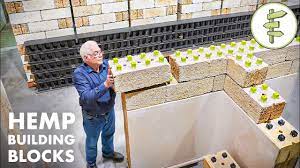
Breaking News
 THE CRYPTO VIGILANTE SUMMIT:
WHAT MATTERS MOST IN CRYPTO
THE CRYPTO VIGILANTE SUMMIT:
WHAT MATTERS MOST IN CRYPTO
 Retarded Or Evil? Leftist Arguments Justifying The Murder Of Charlie Kirk
Retarded Or Evil? Leftist Arguments Justifying The Murder Of Charlie Kirk
 Charlie Kirk once questioned if Ukraine would try to kill him (VIDEO)
Charlie Kirk once questioned if Ukraine would try to kill him (VIDEO)
 KOL060 | Guest on Ernest Hancock's Declare Your Independence radio show: intellectual property a
KOL060 | Guest on Ernest Hancock's Declare Your Independence radio show: intellectual property a
Top Tech News
 Tesla Megapack Keynote LIVE - TESLA is Making Transformers !!
Tesla Megapack Keynote LIVE - TESLA is Making Transformers !!
 Methylene chloride (CH2Cl?) and acetone (C?H?O) create a powerful paint remover...
Methylene chloride (CH2Cl?) and acetone (C?H?O) create a powerful paint remover...
 Engineer Builds His Own X-Ray After Hospital Charges Him $69K
Engineer Builds His Own X-Ray After Hospital Charges Him $69K
 Researchers create 2D nanomaterials with up to nine metals for extreme conditions
Researchers create 2D nanomaterials with up to nine metals for extreme conditions
 The Evolution of Electric Motors: From Bulky to Lightweight, Efficient Powerhouses
The Evolution of Electric Motors: From Bulky to Lightweight, Efficient Powerhouses
 3D-Printing 'Glue Gun' Can Repair Bone Fractures During Surgery Filling-in the Gaps Around..
3D-Printing 'Glue Gun' Can Repair Bone Fractures During Surgery Filling-in the Gaps Around..
 Kevlar-like EV battery material dissolves after use to recycle itself
Kevlar-like EV battery material dissolves after use to recycle itself
 Laser connects plane and satellite in breakthrough air-to-space link
Laser connects plane and satellite in breakthrough air-to-space link
 Lucid Motors' World-Leading Electric Powertrain Breakdown with Emad Dlala and Eric Bach
Lucid Motors' World-Leading Electric Powertrain Breakdown with Emad Dlala and Eric Bach
 Murder, UFOs & Antigravity Tech -- What's Really Happening at Huntsville, Alabama's Space Po
Murder, UFOs & Antigravity Tech -- What's Really Happening at Huntsville, Alabama's Space Po
Lego style hemp blocks, the building material of the future?

What building materials does your house consist of? Surely there is concrete and steel, and in more rare cases, bricks and aerated concrete. But these materials are not the most efficient - they have low noise reduction, they easily remove heat from the room, and they are subject to corrosion and putrefaction. Therefore, new building materials are being actively developed in Europe, and one of them has already gained great popularity - it is known as hempcrete. It is made from hemp and is eco-friendly. But can these hemp blocks replace modern building materials? Concrete as a building material has been known since ancient Rome, as a core material for the construction of public buildings. By the way, the Roman Pantheon is the largest building in the world with a dome made of non-reinforced concrete. Over the centuries, concrete was rarely recalled - they preferred to build structures from stone. And only from the 18th century, did it return to the construction industry. In the 20th century, a revolution took place; an original idea was proposed to improve the characteristics of concrete. It was proposed to place iron reinforcement when pouring inside the structures. So the first high-rise buildings began to appear, and then modern skyscrapers.



